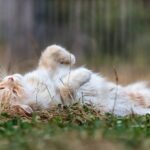Imagine curling up on the couch, your cat gently pressing their head into your hand. Is it a sweet show of love, or is your feline friend yearning for something more? As cat enthusiasts, we often find ourselves guessing: is this affection, or is it a deeper emotional need? Understanding the subtle but important differences can help us build a stronger, healthier bond with our furry companions. Let’s uncover the secrets that lie behind every purr, nuzzle, and meow.
Recognizing Genuine Cat Affection

True affection from a cat often comes in quiet, gentle ways. You might notice your cat slowly blinking at you, softly rubbing against your leg, or curling up beside you while you read or watch TV. These behaviors show trust and comfort, much like a friend resting their head on your shoulder. Cats who feel genuinely affectionate may seek your company without demanding constant attention. Their body language is relaxed—tails held high, slow and rhythmic purring, and loose, floppy postures when they’re near you. These signs mean your cat feels safe and enjoys your presence, not just your attention. When a cat shows affection, it’s like a soft melody that plays in the background of your life—pleasant, calm, and balanced.
The Signs of Emotional Need in Cats

Emotional need in cats can look quite different from affection. Sometimes it appears as persistent meowing, pawing at your face, or following you relentlessly from room to room. These behaviors might be cute at first, but when they become constant, they signal something more. Cats with unmet emotional needs might also show signs of anxiety, such as destructive scratching or over-grooming. Their body language may be tense, with twitching tails, wide eyes, and an almost desperate need to stay close to you. Imagine a child tugging at your sleeve, unwilling to let go—that’s how a needy cat might behave. This isn’t simple affection; it’s a plea for emotional reassurance or stimulation.
What Drives Cat Affection?

Cat affection is rooted in trust and positive past experiences. When your cat chooses to snuggle next to you or gently nuzzles your hand, it’s a sign they’ve built a strong emotional bond with you. These moments are not about fulfilling a void but sharing comfort and companionship. Positive reinforcement, gentle handling, and consistent routines help foster affection. For many cats, affection is their way of saying, “I feel safe with you.” Think of it like a warm blanket on a chilly night—comforting, reliable, and never overwhelming. This kind of affection is not urgent but steady, woven into the fabric of your relationship.
Understanding the Roots of Emotional Neediness

When a cat displays emotional neediness, it usually stems from insecurity, past trauma, or lack of stimulation. Kittens separated too early from their mothers or cats that have experienced neglect often crave constant attention. They may not have learned how to be alone or self-soothe. Environmental changes, such as a new pet or moving house, can also trigger these feelings. Emotional neediness is like a plant reaching desperately for sunlight—always stretching, never quite satisfied. These cats need extra patience and reassurance, but they also benefit from learning independence and confidence through gentle guidance and enrichment.
How to Respond to Affectionate Cats

Responding to a cat’s affection is about meeting them where they are. If your cat curls up beside you or offers gentle head bumps, respond with soft strokes or a quiet word of praise. Allow them to set the pace—some cats love belly rubs, while others prefer a scratch behind the ears. It’s important not to force affection but to let it flow naturally. Just as you’d appreciate a warm hug from a friend, your cat cherishes these gentle exchanges. By honoring their boundaries and responding with kindness, you reinforce their trust and deepen your bond. Affection is a two-way street, and being present in these moments builds a loving relationship.
Helping Cats with Emotional Needs

Cats with emotional needs require more than just extra cuddles. Start by creating a consistent routine, as predictability can ease anxiety. Offer stimulating toys, puzzle feeders, and interactive play sessions to keep their minds occupied. Sometimes, simply sitting nearby without direct interaction can help a needy cat feel secure. If your cat’s neediness is overwhelming, consider consulting an animal behaviorist for guidance. Remember, patience is key—building confidence in a needy cat takes time. Think of it like nurturing a delicate flower: with the right care, they can blossom into a more content and independent companion.
Building a Balanced Relationship

The healthiest cat-human relationships are balanced, respecting both affection and independence. Encourage your cat to explore, play, and spend time alone, while also cherishing the moments of closeness you share. Set aside special times for bonding, like daily play sessions or grooming routines, but also give your cat space when they seek it. Watch for cues in their body language and respond accordingly. Striking this balance ensures your cat feels loved without becoming overly dependent. It’s much like any strong friendship—built on understanding, respect, and the freedom to be oneself.

Growing up traveling and experiencing new cultures and wonders, I have had a passion for nature, adventuring, photography, and videography. I am currently working towards a BSc in Biodiversity and Ecology at Stellenbosch University, and I hope to specialise in Marine Sciences one day.
Please send any feedback to Feedback@animalsaroundtheglobe.com






